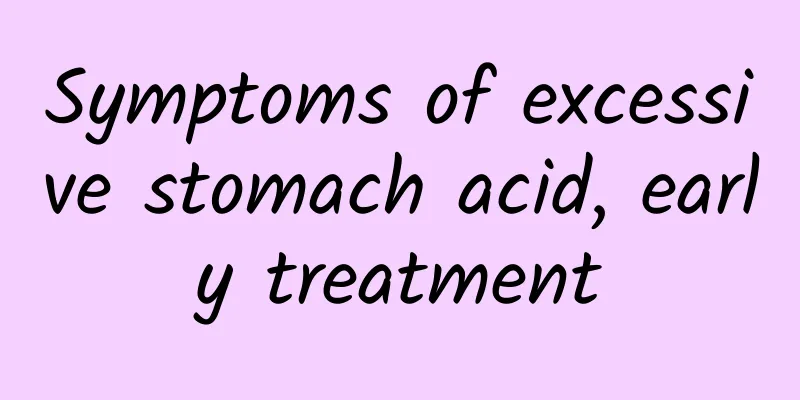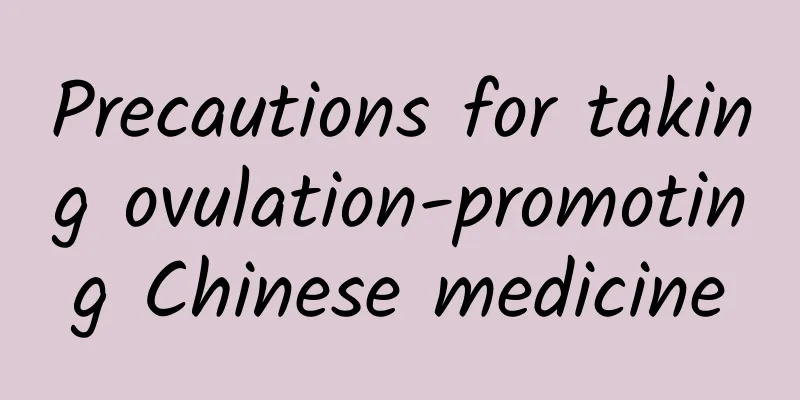Best medicines for gout

|
Allopurinol, febuxostat, and benzbromarone are all commonly used drugs for the treatment of gout and can relieve pain for gout patients. There are both traditional Chinese medicine and Western medicine for the treatment of gout. Western medicine can relieve the patient's pain, while traditional Chinese medicine not only has the efficacy of Western medicine but can also help patients get rid of its toxic side effects and will not have any other effects on the patient's body. From this we can see which is the best medicine for treating gout among Chinese and Western medicines. 1. What are the Western medicines commonly used to treat gout? Western medicines commonly used to treat gout include: (1) Allopurinol. It can inhibit xanthine oxidase, reduce the production of uric acid and have an anti-gout effect; it can prevent the formation of uric acid stones in the kidneys. Used for gout, hyperuricemia and uric acid nephropathy. (2) Febuxostat. It has the same effect as allopurinol, the difference is that febuxostat has fewer clinical side effects than allopurinol, but it is more expensive. The recommended starting dose is 40 mg once a day. (3) Probenecid. It inhibits the reabsorption of uric acid by the renal tubules and promotes its excretion. The dosage is 0.25 grams each time, twice a day. After one week, increase to 0.5 grams each time, twice a day. This drug has fewer adverse reactions, but it is contraindicated in patients with renal insufficiency, as it may aggravate symptoms in the early stages of treatment. (4) Benzbromarone (Ligalicin). This drug can inhibit the reabsorption of uric acid in the proximal convoluted duct of the kidney. The blood uric acid concentration will decrease by about 35% 24 hours after taking the drug. There are few adverse reactions, and only a decrease in granulocytes may be observed in some cases. The dosage is 40 mg each time, once a day, gradually increasing to 80 mg each time, for 3 to 6 months. Note: This drug should not be taken with salicylates (such as aspirin) to avoid reducing the efficacy of this drug. 2. How to use allopurinol? Allopurinol can inhibit xanthine oxidase, reduce the production of uric acid and have an anti-gout effect, and can prevent the formation of uric acid stones in the kidneys. This medicine is commonly used for gout, hyperuricemia, and uric acid nephropathy. The dosage is 0.1 gram each time, 1 to 3 times a day (gradually increase the dosage). Generally, blood uric acid begins to decrease 24 to 48 hours after oral administration, and the most obvious decrease is in 2 to 4 weeks. Patients with renal insufficiency should reduce the dosage, usually to 0.1 grams per day. The main adverse reactions of this drug are allergies, such as rash, granulocytopenia, increased transaminase, and gastrointestinal reactions. Drink plenty of water while taking the medicine and alkalize your urine, such as taking baking soda tablets (sodium bicarbonate tablets) orally. The initial use of the medication may induce gout symptoms, which can be combined with colchicine for prevention. 3. Under what circumstances should colchicine be used? Colchicine is usually used to treat acute attacks of gouty arthritis or to prevent recurrent acute attacks of gouty arthritis. Regarding the low-dose regimen of Colchicine, the answer given abroad is to take 1.2 mg initially, then 0.6 mg, 1 time/1 hour, 1 time/day, for a total of 1.8 mg throughout the day. However, since the colchicine dosage in my country is mostly 0.5 mg, the solution that suits my country's national conditions can be adjusted to: Start with 1.0 mg, then take 0.5 mg 1 hour later, and then take another 0.5 mg after 12 hours if necessary (the total daily dose should not exceed 2 mg). Then take 0.5 mg two to three times daily until pain symptoms subside, usually no more than two weeks. The preventive dose is only 0.5 mg or 1 mg per day. It is worth noting that since colchicine puts a certain burden on the kidneys, doctors will make specific adjustments to the drug dosage based on the patient's renal function. For acute patients with more serious conditions, low-dose colchicine combined with nonsteroidal anti-inflammatory drugs can also be considered for treatment. The two have a synergistic effect with significant therapeutic effects and the incidence of colchicine side effects is significantly reduced. 4. Under what circumstances should glucocorticoids be used? Glucocorticoids, such as methylprednisolone, are steroidal drugs and are not commonly used drugs for the treatment of gout. They are only used when severe acute gout attacks are accompanied by severe systemic symptoms and non-steroidal anti-inflammatory drugs and colchicine are ineffective or the patient cannot tolerate them. Since "rebound" is likely to occur after reducing or withdrawing glucocorticoids, it is best to use a maintenance dose of colchicine or indomethacin for 5 to 7 days at the same time. 5. What are the precautions for using painkillers (non-steroidal anti-inflammatory drugs)? Nonsteroidal anti-inflammatory drugs have always been the first choice for treating acute attacks of gout. Their efficacy is certain, but they have significant effects on the gastrointestinal tract and kidneys. Gastrointestinal adverse reactions include indigestion, bleeding, erosion and ulcers. The kidneys may experience water and electrolyte imbalance, acute renal failure, nephrotic syndrome, interstitial nephritis and renal papillary necrosis. Therefore, the use of this type of drug should be careful. First, the course of treatment should be short, the dosage should not be too large, and it should be started with a small dose. Second, pay attention to the method of administration. Oral medications can be taken while eating or immediately after meals to reduce gastrointestinal irritation. Third, it is contraindicated for people with allergic reactions, active peptic ulcers or gastric bleeding, severe liver and kidney dysfunction, asthma, angioedema, as well as pregnant women, lactating women, inflammatory bowel disease and severe heart failure. 6. Traditional Chinese Medicine The new rehabilitation product - Tri-zero Urea, contains biological urate and nano-renin that are missing or reduced in the bodies of gout patients. It has obtained the formal approval of the State Food and Drug Administration as a "special dietary food". Its launch means that gout patients can not only get rid of the toxic side effects of western medicine, but also fundamentally get rid of the label of gout, eat whatever they want, drink whatever they want, and live a normal and happy life. |
<<: Drug hypersensitivity syndrome
>>: Breathing techniques to relieve labor pain
Recommend
What is the normal blood sugar concentration?
There are many elements in the human body, includ...
What are the clinical manifestations of spinal shock?
Spinal shock is actually not difficult to underst...
Can pregnant women drink Pu'er tea?
Pu'er tea is made from large-leaf tea from Yu...
What does long and clear urine mean?
Many times, if we go to the hospital to check our...
Schizophrenia
Schizophrenia is a well-known type of mental illn...
Chinese patent medicine for clearing lung and stomach heat
The technology needed now is becoming more and mo...
Long-term use of headache powder is harmful
Headache is a very common disease in daily life. ...
What situations are likely to cause hormone-dependent dermatitis?
There are many causes of hormone-dependent dermat...
The benefits of orange peel foot bath
Orange peel is the skin peeled from an orange. It...
Acupoint massage for health preservation during the "Three Nine Days"
People who practice martial arts know that human ...
How to treat stroke
The word "disease" should be quite frig...
What to do with vertigo and vomiting? Chinese medicine classification and dialectical treatment
Do you often feel dizzy, nauseous and vomiting? T...
What is the cause of high uric acid
High uric acid level is a common disease. At the ...
Urethral sphincter pain
Some patients often feel uncomfortable when urina...
Can I use aloe vera gel after laser freckle removal?
Spots will be very obvious on our skin because th...









